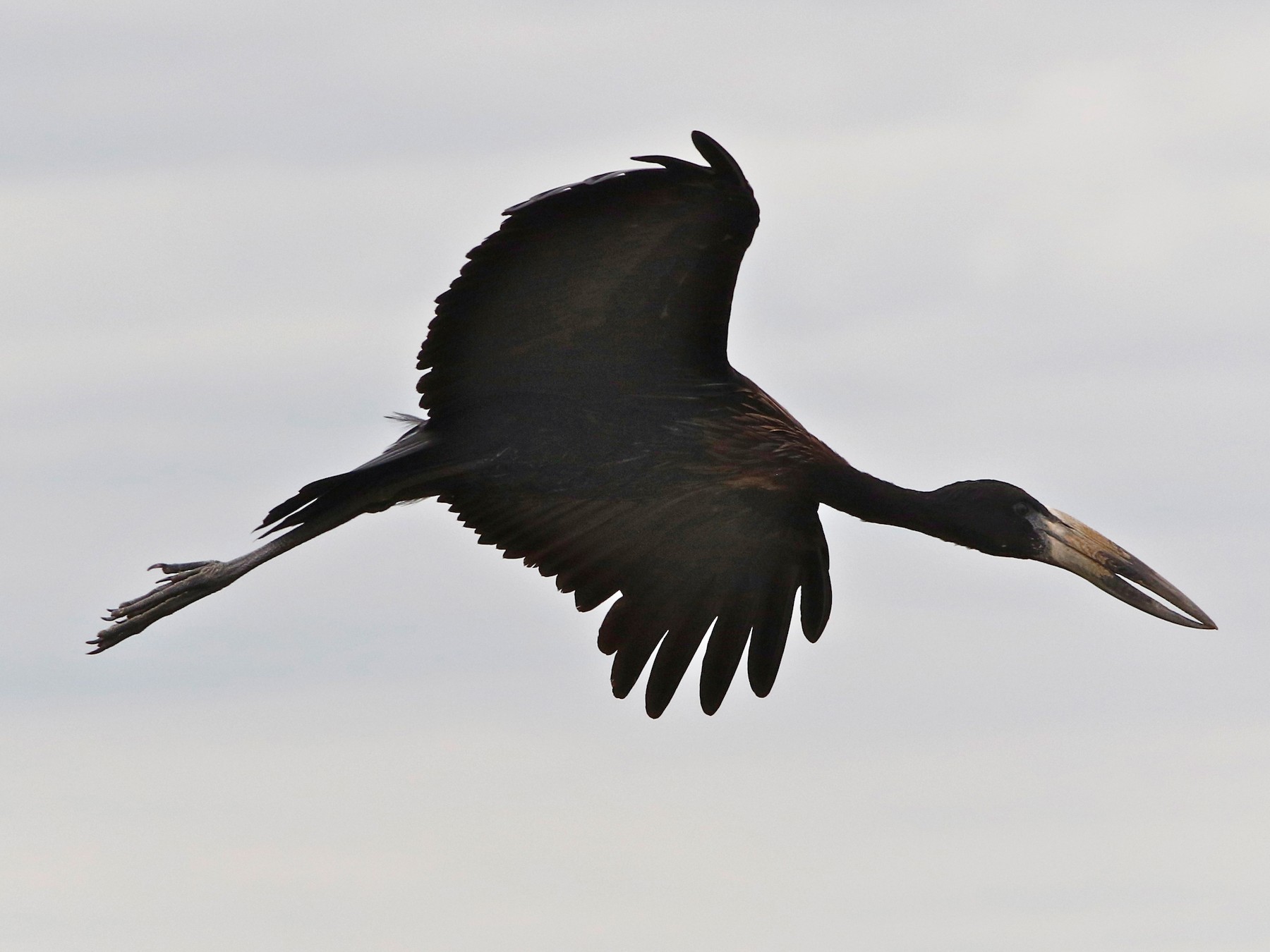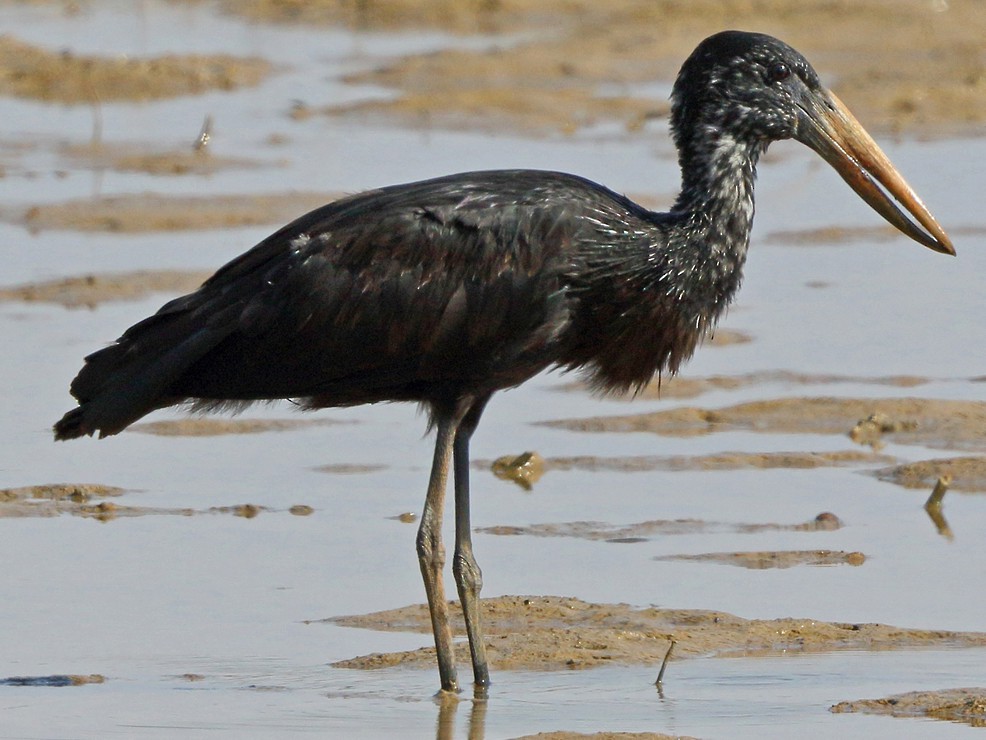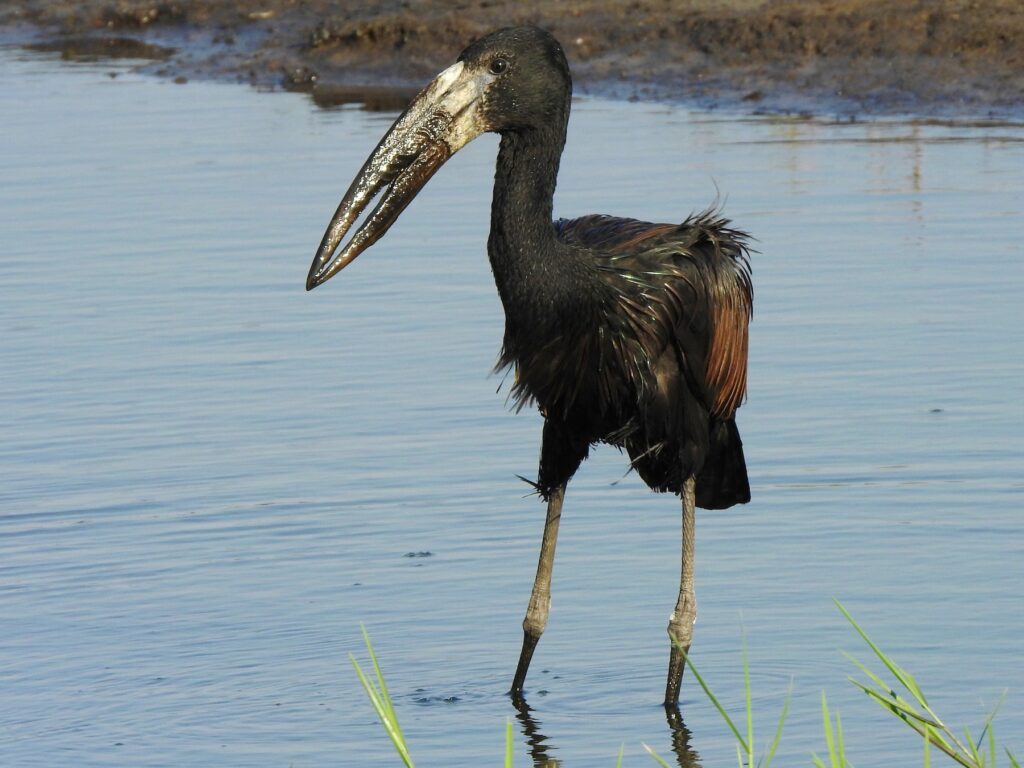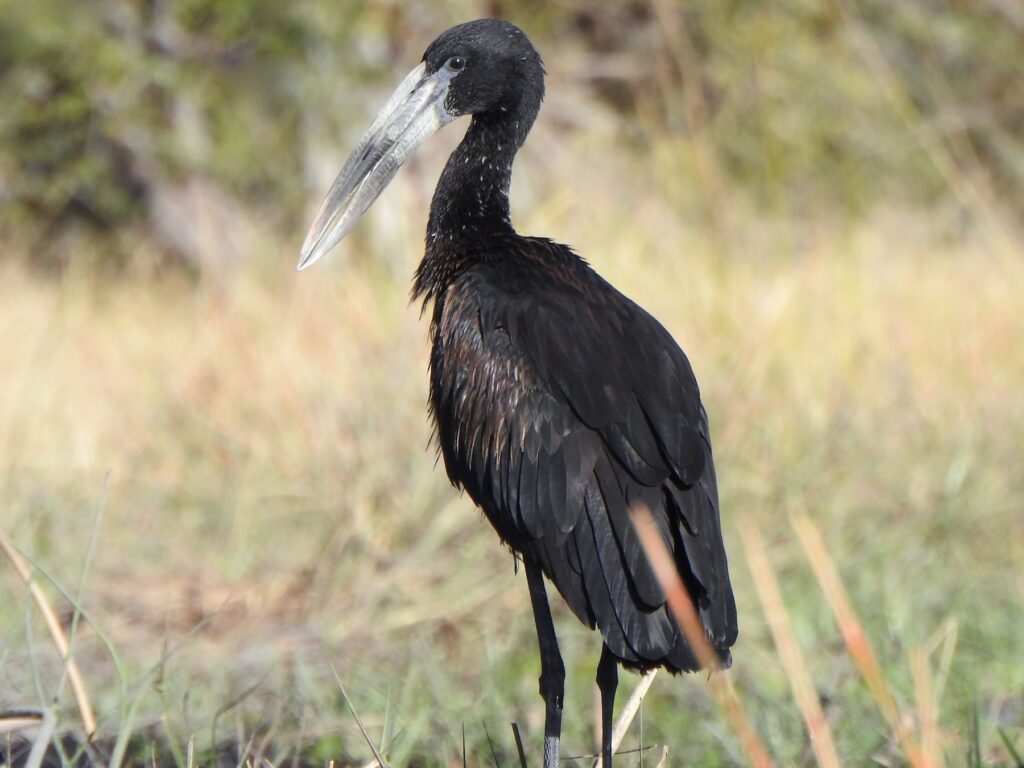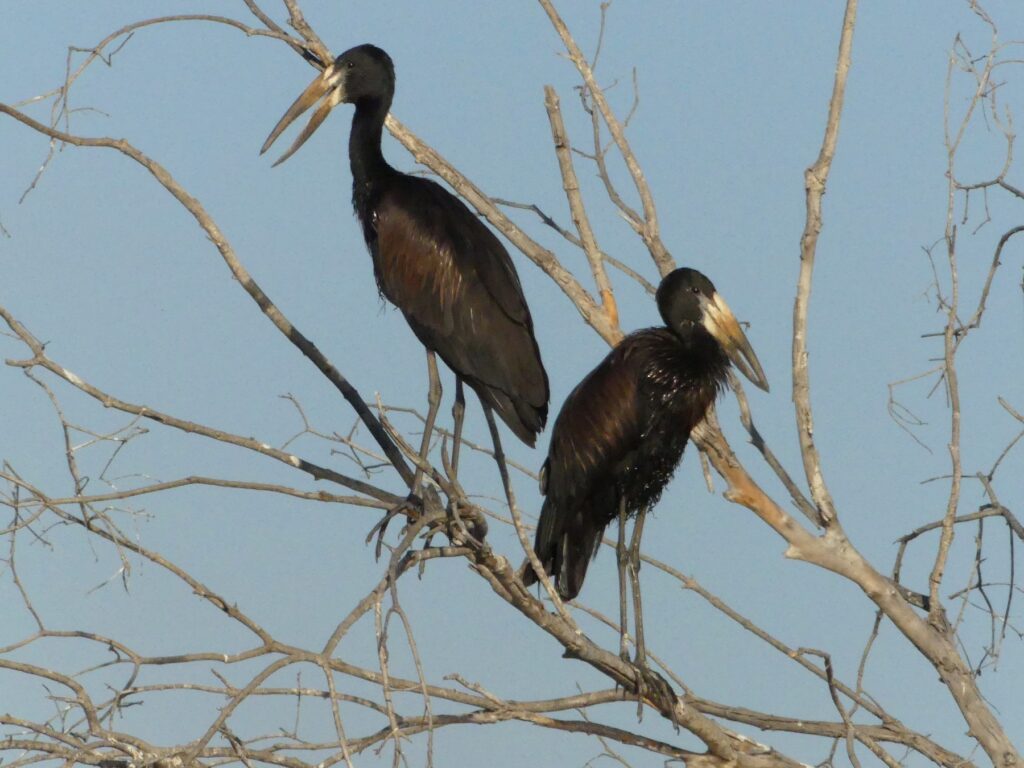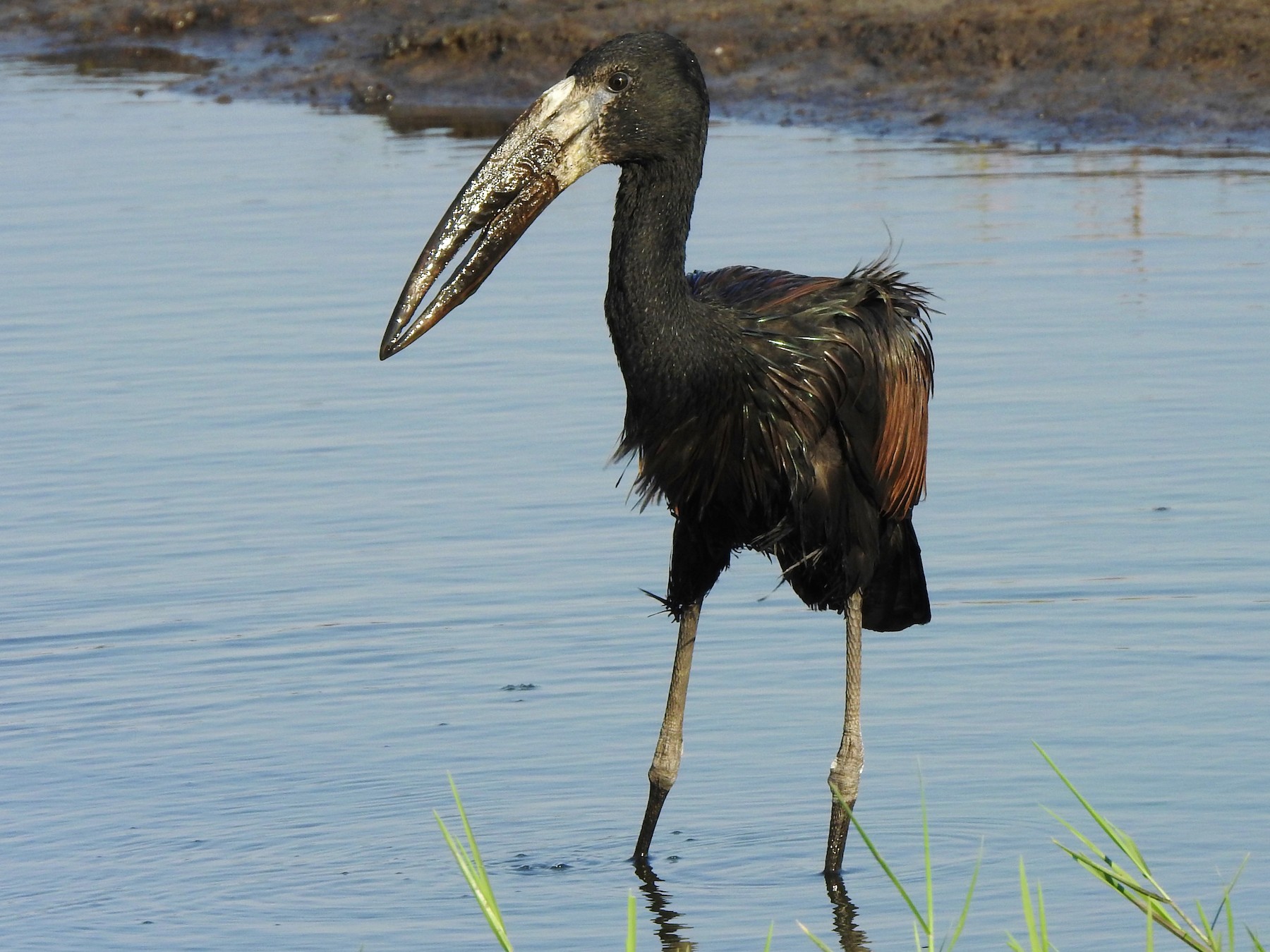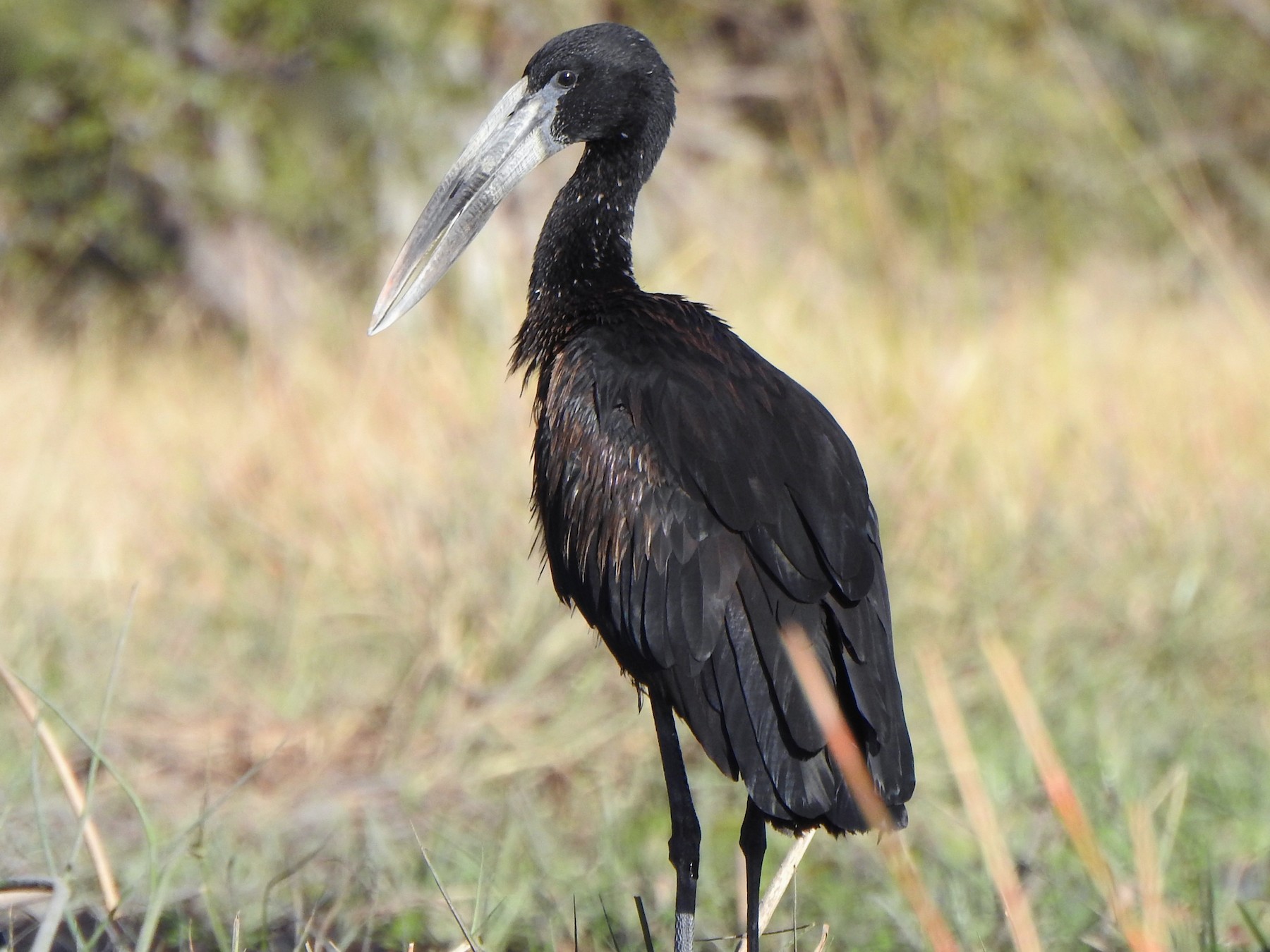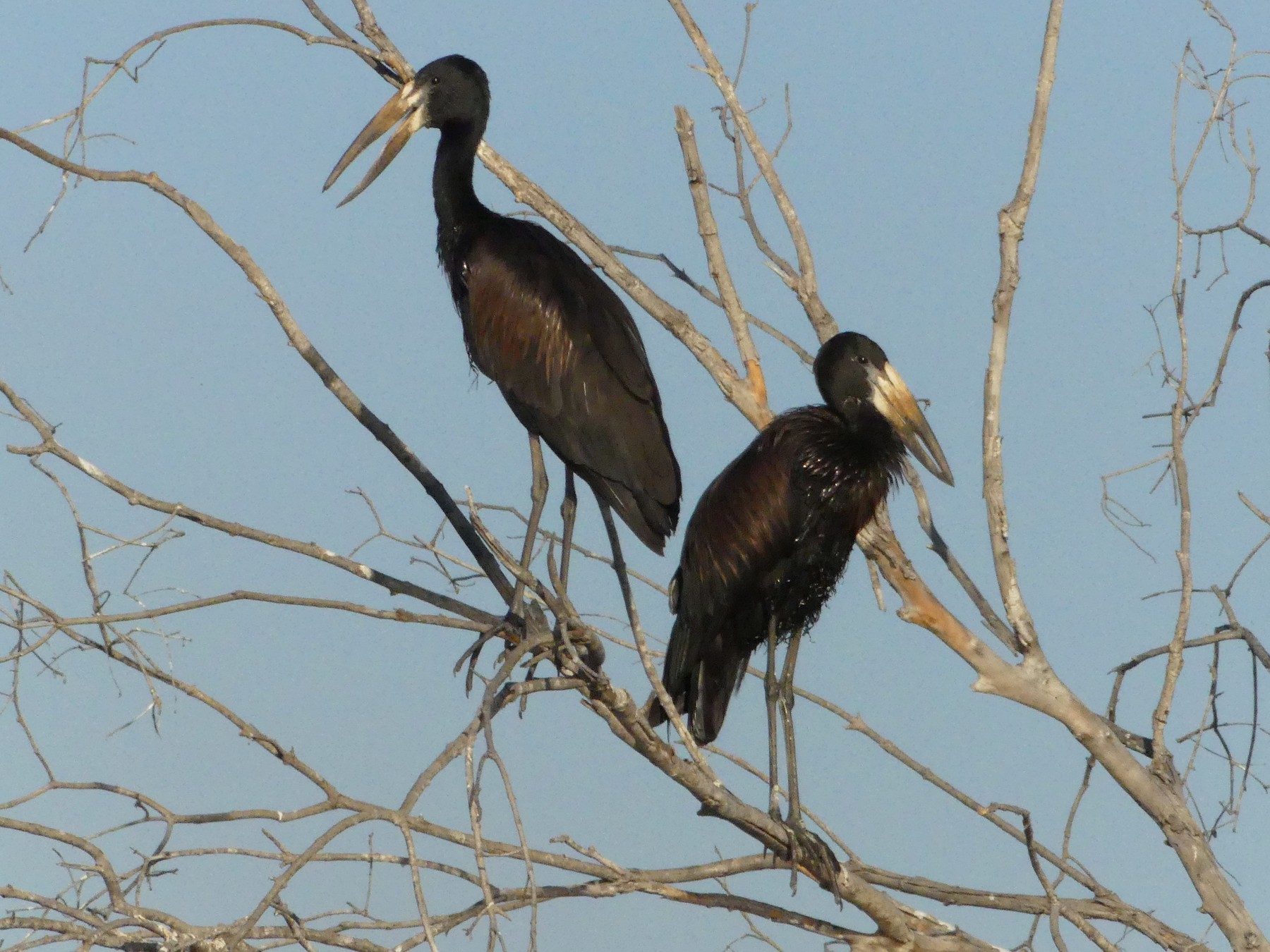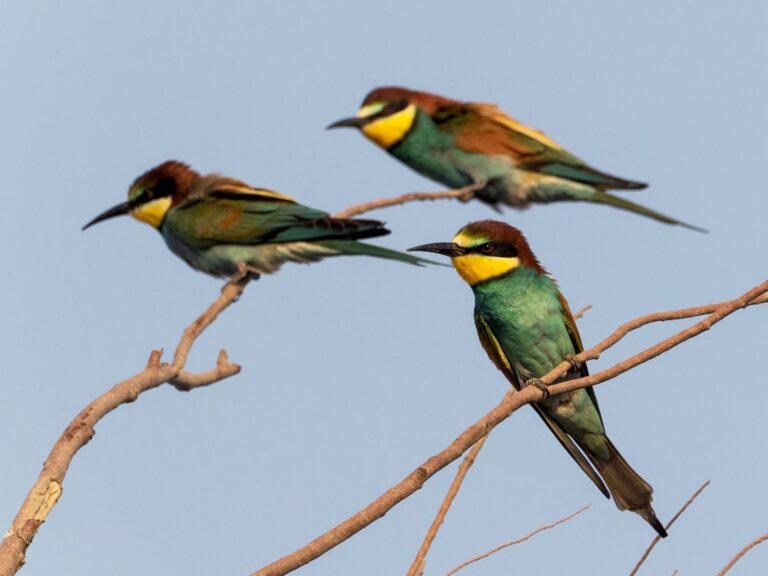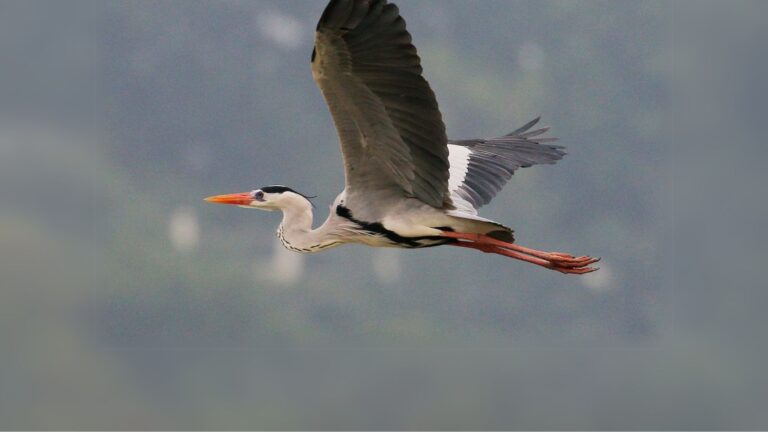African Openbill: Fascinating Adaptations and Unique Feeding Habits
Overview of the African Openbill
The African Openbill stands out among storks in sub-Saharan Africa’s wetlands and floodplains. Its odd bill, dark glossy feathers, and foraging style make it hard to mistake for anything else.
Scientific Classification
Known to science as Anastomus lamelligerus, the African Openbill belongs to the Ciconiidae family—the stork crowd. It shares the genus Anastomus with its Asian cousin, the Asian Openbill.
Back in 1791, the species got its first official description. It’s still listed as Least Concern by the IUCN, so it’s not in immediate trouble.
You’ll find African Openbills across much of sub-Saharan Africa, especially in watery places like the Barotse Floodplain in Zambia. Rivers, marshes, lakes, and swamps are their main hangouts.
Learn More About the Bird’s of Africa
There are many wonderful resources to learn more about the spectacular biodiversity of our avian friends in Africa. Here’s just one.
Physical Characteristics
This bird isn’t huge—a typical adult stands about 80–94 cm (31–37 inches) tall. The bill is what really grabs your attention: there’s a visible gap between the upper and lower parts, even when the bill’s closed. That odd gap is perfect for grabbing snails, which are its favorite snack.
Adults look mostly dark, with glossy black feathers that can shimmer bronze-green or purple in the right light. Their broad wings and long legs help them wade through water. Juveniles start out duller and browner.
Males and females look almost identical, so don’t expect to tell them apart by eye. The slim build and that unmistakable bill gap are the big giveaways.
Recognizing an African Openbill
If you spot a stork with a slightly “open” bill at rest, you’ve probably found your bird. Few storks have this feature.
Adults have an iridescent, dark look, which really pops in sunlight or when they’re in flight. When feeding, they poke around in shallow water or mud for snails and other small critters. Honestly, between the bill, the dark sheen, and the foraging behavior, there’s not much else like it in Africa.
Some of the best places to see them include the Barotse Floodplain and various wetlands in West Africa, especially during breeding time.
Habitat and Geographic Range
The African Openbill pops up all over sub-Saharan Africa, but you’ll mostly find them where water’s plentiful and their favorite food is easy to get.
Preferred Environments
They stick to wetlands—shallow lakes, marshes, swamps, floodplains, and riverbanks. These spots are loaded with aquatic snails, especially those from the genus Pila, which are basically openbill candy.
When things dry up, these birds don’t just sit around; they’ll travel surprising distances to find new feeding grounds. They usually nest in big trees in flooded areas, which keeps them safe and close to food. If wetlands are scarce, you might see them in rice paddies or irrigated fields. Dense forests and dry places? Not their thing. They like to stay near reliable water.
Distribution in Botswana
In Botswana, look for African Openbills mainly in the Okavango Delta, Chobe River floodplains, and other big wetland areas. The seasonal floods here are perfect for them.
Major Botswana habitats:
- Okavango Delta: The main stronghold for openbills.
- Chobe River: Especially good in wet years.
- Makgadikgadi Pans: Used when there’s been plenty of rain.
They’re pretty common in these spots and often gather in large flocks, especially outside breeding season. Protecting these wetlands is vital—lots of openbills depend on them during migrations and tough times. For a more detailed look, check the distribution assessment of African storks.
Populations in Madagascar
Madagascar does have African Openbills, but not many. They stick to western coastal wetlands and river areas, where seasonal flooding keeps the snail supply up.
Reports suggest Madagascar’s openbills don’t move quite like their mainland relatives, maybe because the wetlands are so patchy and isolated. Sightings usually come after heavy rains.
There’s not a ton of research on Madagascar’s population, but it’s clear that saving wetlands from being drained or ruined is key. For more on their global range, see studies on African Openbill populations.
Diet and Feeding Behavior
The African Openbill is a bit of a specialist, both in what it eats and how it hunts. Its body and bill are built for the job.
Primary Diet
These storks are all about aquatic mollusks, especially freshwater snails from the Ampullariidae family—apple snails, mostly. You’ll often catch them wading through shallow wetlands and flooded fields, picking off snails where they’re thickest.
They’ll also eat freshwater mussels, insects, and sometimes small fish or frogs, but really, snails are the main course. In places where snails are everywhere, openbills can show up in big flocks. Young birds start out with smaller prey and graduate to bigger snails as they get older.
If snails run low, openbills will look for other aquatic invertebrates. Local food shortages can push them to move around more, and even affect their breeding. For more details, there’s some good info in ornithological studies like this one on the breeding biology of African Openbills in Zambia.
Hunting Techniques
Openbills have a hunting style that’s pretty much tailor-made for snails. They move slowly through shallow water, probing mud and plants with their slightly open bill, hoping to feel out hidden prey.
When they find a snail, they use the bill to pull it out from the mud or plants. Big snails require a bit more work: the stork might twist, shake, or pry until the meal’s ready. Sometimes, you’ll see several birds feeding together in a rich patch, but they don’t really fight over food since there’s often plenty to go around.
One neat trick: they seem to be able to tell live snails from empty shells or junk, so they don’t waste time. This picky approach helps them get the most out of each meal. For more on their feeding style, check out this study on openbill storks’ feeding behavior.
Role of the Operculum
The “operculum” is a tough little plate that covers a snail’s opening when it pulls in. Getting past it isn’t easy, but the African Openbill’s beak is up to the challenge. That bill gap? It lets the tips meet at one point, so the bird can grip and work the operculum loose. The stork pokes its bill into the shell, twists or pulls until the operculum and snail come out, then drops the shell. All pretty efficient, honestly.
Turns out, the bill isn’t just a nutcracker; it’s a specialized tool for handling snails and their tricky shells. This adaptation lets openbills feed way more efficiently than most other storks. Want to dig deeper? There’s more in this research on feeding behavior and the function of the open bill.
Reproduction and Lifecycle
The African Openbill’s breeding habits are closely tied to rainy seasons, food surges, and wetland changes. Where and when they nest, what they use, and how chicks grow—all of it depends on the wetlands.
Breeding Season
Rain kicks off the breeding season for African Openbills. When the rains start and snails get plentiful, the birds get busy. The timing isn’t the same everywhere—each region’s rainfall patterns set the schedule, but breeding usually lines up with the best food and safest nesting spots.
In Zambia, you can see massive colonies form as the rains peak. Breeding might last several months, depending on how long the water sticks around. Colonies can have hundreds or even thousands of birds, and the whole place gets loud and lively. In areas like the Barotse floodplain, breeding is tightly linked to water conditions. For more on this, see the breeding biology in Zambia.
Nesting Habits
Openbills nest in colonies, usually in flooded forests or reed beds that keep predators away. They build nests out of sticks, reeds, or water plants, placing them up in trees or thick vegetation above the water. That way, eggs and chicks have a better shot at avoiding danger.
Both parents pitch in for nest building. Most nests only get used for one season, but if the spot stays good, they might come back. Clutches usually have 2-4 eggs, and both mom and dad take turns incubating.
When they nest depends on when food is easiest to get. Water levels play a big part in where they choose to nest, since higher water means more food and fewer land predators. You can find more on this in studies about breeding patterns in Namibia and tropical Africa.
Development of Chicks
Chicks hatch after about a month of incubation and arrive helpless, needing plenty of care. Parents feed them by regurgitating aquatic snails and other prey—this food really drives their rapid growth during those first weeks in the nest.
As the chicks grow, parents adjust how often and what they feed them, getting the young ready for independence. Chicks hang around the nest for several weeks before they fledge and start figuring out how to fly.
Early nutrition makes a huge difference; researchers have tracked feeding patterns in openbill hatchlings, like those described in the Asian Openbill, and found some interesting similarities.
Survival rates in chicks often come down to how much food is around, what the weather’s doing, and how much water covers the nesting sites, since that affects both protection and growth.
Subspecies and Taxonomy
The African Openbill stands out among storks for its odd bill and the places it chooses to live. Its classification history is tangled, with plenty of debate and ongoing research into stork diversity across Africa.
Recognized Subspecies
The African Openbill (Anastomus lamelligerus) is usually treated as a single species, with very little division into subspecies. Most experts don’t split it up further, though now and then people report regional differences—maybe a bit of variation in plumage shade or size, but nothing consistent.
Some ornithologists have argued that populations in Madagascar or along East Africa’s coast could be subspecies. For instance, A. l. madagascariensis pops up in some discussions, but there just isn’t enough evidence—morphological or genetic—to make it stick. Most modern resources and checklists still call the African Openbill monotypic. The Birds of Africa and similar references often point out how tricky subspecies recognition is among African storks.
Relation to Other Storks
The African Openbill falls under the genus Anastomus, which includes just two species: the African and the Asian Openbill (Anastomus oscitans). Both are famous for that odd gap between their mandibles—a neat trick for eating mollusks.
This genus sits within the stork family, Ciconiidae, but it’s pretty different from other African storks like the Marabou (Leptoptilos crumeniferus), Abdim’s Stork (Ciconia abdimii), or the Saddle-billed Stork (Ephippiorhynchus senegalensis). Anastomus species are generally smaller and, of course, have that specialized bill.
Recent taxonomic reviews, including big field guides and edited books like The Birds of Africa, still place the African Openbill firmly in this unique genus. The evolutionary relationships between openbills and other storks? Still a bit of a puzzle, honestly—stork diversification in Africa is a complicated story.
Conservation Status and Threats
African Openbills are scattered all over sub-Saharan Africa and, in the right wetlands, can be pretty common. Still, changing environments, human expansion, and some local threats are always at play and could shift their outlook over time.
Population Trends
On a continental scale, African Openbill numbers seem stable. They’re widespread, and in some places—like Zambia—they gather in massive breeding colonies. Counts show their numbers rise and fall with the seasons, mostly tracking wetland water levels, since these birds are so tied to those habitats.
They aren’t listed as threatened, but in spots where wetlands are disappearing fast, local declines have happened. Their knack for moving around helps them dodge sudden, widespread crashes. For a closer look at population trends in Zambia, check out this breeding biology assessment.
Human Impact
African Openbills feel the pressure from all sides—wetlands drained for farms, towns and cities creeping outwards, and dams that mess with natural floods. All these things chip away at their feeding and nesting grounds.
Some regions don’t have strong legal protections for key wetlands. For example, places like Ogongo Game Park in Namibia aren’t formally protected, so openbill nests there are more exposed to disturbance and habitat loss. Urban growth can also spook colonies or destroy nesting sites. There’s more on these management headaches in studies of protected areas in Namibia.
Environmental Challenges
Environmental shifts keep throwing curveballs at African Openbills. Habitat fragmentation and vanishing wetlands—usually from deforestation or changing land use—are the biggest headaches. And then there’s climate change, which makes rainfall and wetland cycles unpredictable, messing with food supplies.
Water pollution, especially from farm runoff and industry, can ruin feeding spots and maybe even hurt breeding. Natural disasters like long droughts or floods can throw breeding and feeding out of whack. If you want to dig deeper, there’s some good research on land use and bird conservation.
Cultural and Economic Importance
The African Openbill stork means different things to different African communities. It’s not just an ecological player—it pops up in cultural practices and even folk medicine. Sometimes it’s woven into local economies and traditions, too.
Use in Traditional Medicine
In some regions, people use parts of the African Openbill in traditional healing. For example, in Ethiopia, the bird’s meat goes into medicinal soup, which some believe has healing powers. The Nuer people make soup from the African Openbill and the sacred ibis for rituals and health, blending spiritual beliefs with practical remedies.
This link between the bird and healing runs deep and often carries symbolic meaning. There’s a fascinating look at this in research on human-bird interactions among the Nuer in western Ethiopia, showing how the African Openbill fits into both health practices and cultural identity.
Media and Creative Resources
Photos and videos of the African Openbill are surprisingly useful—they help teachers, designers, and researchers bring these birds to life. Visuals show off their behaviors and habitats, adding context for all sorts of projects, whether scientific or creative.
Stock Photos
You’ll find plenty of stock photos of African Openbills, both royalty-free and rights-managed. These images capture their odd silhouette, that unmistakable bill, and their favorite haunts—wetlands and riverbanks. Most big stock agencies have collections showing them during breeding, foraging, or even mid-flight.
If you’re using images for business or publishing, check the license carefully. Royalty-free means you pay once and use it as much as you want; rights-managed is usually for more specific, limited uses. You’ll spot top-notch wildlife shots on nature sites and with major agencies.
Vectors and Illustrations
Lots of artists and designers have made vectors and illustrations of the African Openbill, highlighting its weird bill and plumage. These are great for educational posters, journals, or field guides. Formats like SVG, EPS, and high-res PNG give you options for print or digital projects.
Some illustrations are royalty-free downloads, while others are editorial only. A few creative sites even let you tweak the vectors for your own needs. Students and teachers can grab simple diagrams for class, while publishers might want more technical, rights-managed art for ornithology books.
Frequently Asked Questions
The African Openbill is a pretty unique stork from sub-Saharan Africa, best known for its bill and its knack for hunting snails. It fills a specific niche in wetlands and has some quirky breeding and nesting habits.
What are the distinctive characteristics of the African Openbill?
The African Openbill (Anastomus lamelligerus) stands out thanks to its beak—the upper and lower mandibles don’t quite meet, leaving a visible “open” gap even when closed. This helps the bird pull snails out of their shells.
Adults have dark, glossy feathers that can look bronze or green depending on the light. They’ve got long legs and a slightly bald head, too.
How does the African Openbill differ from the Asian Openbill?
Both species are close cousins, but you can tell them apart by the bill and where they live. The African Openbill’s bill has a bigger, heavier gap. The Asian Openbill (Anastomus oscitans), found in South and Southeast Asia, has a less obvious gap.
What is the typical diet of the African Openbill stork?
Mostly, they eat aquatic snails—especially those in the genus Pila. Their bill is perfectly shaped for pulling snails out of their shells, which is kind of their superpower.
They’ll also eat other mollusks, insects, and aquatic invertebrates when they find them. Fieldwork shows their lives really revolve around foraging for these foods, so wetlands with lots of snails are prime real estate for this species.
Where can the African Openbill typically be found in the wild?
The African Openbill hangs out all over tropical and sub-Saharan Africa. You’ll usually spot them in wetlands, marshes, floodplains, and along the edges of rivers and lakes—basically anywhere soggy enough for their tastes.
Big breeding groups show up in places like Zambia, especially where the wetlands stretch on for miles.
How does the African Openbill contribute to its ecosystem?
African Openbills eat loads of aquatic snails, and that makes a real difference. Since some snails carry nasty parasites that mess with both livestock and people, these storks actually help keep disease in check. Their constant foraging shakes up the wetland ecosystem, keeping snail numbers from getting out of hand.
Of course, they’re not at the top of the food chain. Bigger birds and other predators sometimes hunt them, so Openbills fit right into the whole wetland food web.
What are the breeding habits of the African Openbill?
Breeding usually lines up with the rainy season, when food’s easier to find. These storks gather in colonies, picking tall trees or thick reedbeds close to water. They put together nests from sticks, then add a softer lining.
The female lays two to four eggs, give or take. Both parents take turns incubating and looking after the chicks until they’re ready to leave the nest. If you want to dig deeper, there’s a solid study on African Openbills in Zambia that’s worth a look.
